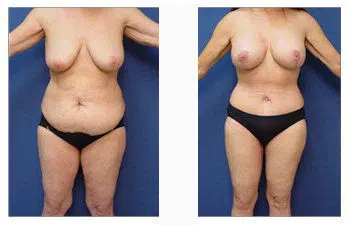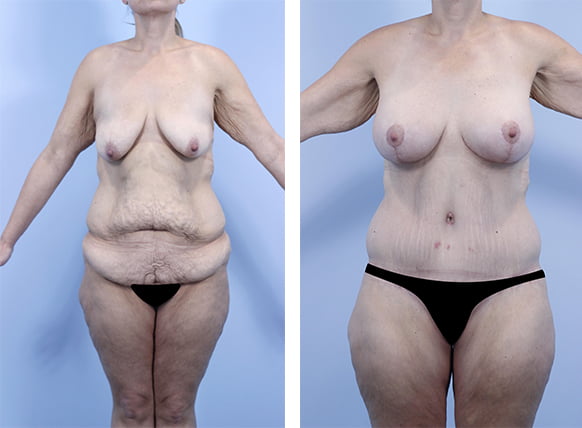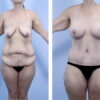



Free
Embark on a transformative journey with our exceptional range of medical treatments. As a leading medical tour operator, we offer a comprehensive selection of world-class treatments and procedures to address your unique healthcare needs. From advanced surgeries to cutting-edge therapies, our team of experienced professionals is dedicated to providing top-notch care and ensuring your comfort and satisfaction. Discover a new level of healthcare excellence with our tailored treatment options. Book now to start your journey towards a healthier and happier you.
A total body lift, also known as a circumferential body lift or a belt lipectomy, is a surgical procedure that addresses excess skin and tissue around the entire body. It is a more extensive procedure compared to an upper body lift, as it involves removing excess skin and tissue from the abdomen, back, buttocks, and thighs.
A total body lift is typically performed on individuals who have lost a significant amount of weight, either through diet and exercise or bariatric surgery, and have loose, sagging skin as a result. It is designed to improve the overall body contour and address multiple areas of concern in a single surgery.
During a total body lift, incisions are made around the waistline, allowing the surgeon to remove excess skin and tissue from the abdomen, back, buttocks, and thighs. The remaining skin is then lifted and tightened, creating a more toned and youthful appearance. Liposuction may also be performed to further contour the body and remove excess fat deposits.
The recovery process for a total body lift is typically longer and more involved compared to an upper body lift. Patients may experience swelling, bruising, and discomfort, which can be managed with pain medications and proper postoperative care. It is important to follow the surgeon’s instructions regarding wound care, activity restrictions, and wearing compression garments.
As with any surgical procedure, there are potential risks and complications associated with a total body lift, including infection, poor wound healing, bleeding, seroma formation, changes in sensation, asymmetry, and scarring. It is important to have a thorough consultation with a qualified plastic surgeon to determine if a total body lift is suitable for your specific needs and goals.
Overall, a total body lift can provide significant improvements in body contour and help individuals achieve a more proportionate and aesthetically pleasing appearance.
A total body lift is suitable for individuals who have lost a significant amount of weight and have excess skin and tissue around their entire body. It is commonly performed on individuals who have undergone significant weight loss through diet and exercise or bariatric surgery. The procedure is designed to address multiple areas of concern, including the abdomen, back, buttocks, and thighs.
Suitable candidates for a total body lift typically meet the following criteria:
While a total body lift can provide significant improvements in body contour for many individuals, there are certain cases where it may not be suitable. Some factors that may make a person not suitable for a total body lift include:
There are several advantages to undergoing a total body lift surgery. Some of the key advantages include:
Like any surgical procedure, a total body lift carries potential risks and complications. It is important to be aware of these potential complications before undergoing the surgery. Some possible complications of a total body lift include:
Preoperative care refers to the steps and preparations taken before a surgical procedure to ensure the best possible outcome and minimize the risk of complications. It involves a combination of medical evaluations, lifestyle adjustments, and instructions provided by the surgical team. Here are some common aspects of preoperative care:
Postoperative care refers to the steps and precautions taken after a surgical procedure to promote healing, manage pain, and minimize the risk of complications. The specific postoperative care instructions may vary depending on the type of surgery and individual circumstances. However, here are some general guidelines for postoperative care:
Only logged in customers who have purchased this product may leave a review.
A total body lift, also known as a circumferential body lift or a belt lipectomy, is a surgical procedure that addresses excess skin and tissue around the entire body. It is a more extensive procedure compared to an upper body lift, as it involves removing excess skin and tissue from the abdomen, back, buttocks, and thighs.
A total body lift is typically performed on individuals who have lost a significant amount of weight, either through diet and exercise or bariatric surgery, and have loose, sagging skin as a result. It is designed to improve the overall body contour and address multiple areas of concern in a single surgery.
During a total body lift, incisions are made around the waistline, allowing the surgeon to remove excess skin and tissue from the abdomen, back, buttocks, and thighs. The remaining skin is then lifted and tightened, creating a more toned and youthful appearance. Liposuction may also be performed to further contour the body and remove excess fat deposits.
The recovery process for a total body lift is typically longer and more involved compared to an upper body lift. Patients may experience swelling, bruising, and discomfort, which can be managed with pain medications and proper postoperative care. It is important to follow the surgeon’s instructions regarding wound care, activity restrictions, and wearing compression garments.
As with any surgical procedure, there are potential risks and complications associated with a total body lift, including infection, poor wound healing, bleeding, seroma formation, changes in sensation, asymmetry, and scarring. It is important to have a thorough consultation with a qualified plastic surgeon to determine if a total body lift is suitable for your specific needs and goals.
Overall, a total body lift can provide significant improvements in body contour and help individuals achieve a more proportionate and aesthetically pleasing appearance.
A total body lift is suitable for individuals who have lost a significant amount of weight and have excess skin and tissue around their entire body. It is commonly performed on individuals who have undergone significant weight loss through diet and exercise or bariatric surgery. The procedure is designed to address multiple areas of concern, including the abdomen, back, buttocks, and thighs.
Suitable candidates for a total body lift typically meet the following criteria:
While a total body lift can provide significant improvements in body contour for many individuals, there are certain cases where it may not be suitable. Some factors that may make a person not suitable for a total body lift include:
There are several advantages to undergoing a total body lift surgery. Some of the key advantages include:
Like any surgical procedure, a total body lift carries potential risks and complications. It is important to be aware of these potential complications before undergoing the surgery. Some possible complications of a total body lift include:
Preoperative care refers to the steps and preparations taken before a surgical procedure to ensure the best possible outcome and minimize the risk of complications. It involves a combination of medical evaluations, lifestyle adjustments, and instructions provided by the surgical team. Here are some common aspects of preoperative care:
Postoperative care refers to the steps and precautions taken after a surgical procedure to promote healing, manage pain, and minimize the risk of complications. The specific postoperative care instructions may vary depending on the type of surgery and individual circumstances. However, here are some general guidelines for postoperative care:
There are no reviews yet.
Only logged in customers who have purchased this product may leave a review.
Choosing the right hospital and physician are important factors to consider that significantly influence a patient’s treatment. The preferred choice for many patients is choosing private care.
Choosing the right hospital and physician are important factors to consider that significantly influence a patient’s treatment.
Reviews
There are no reviews yet.